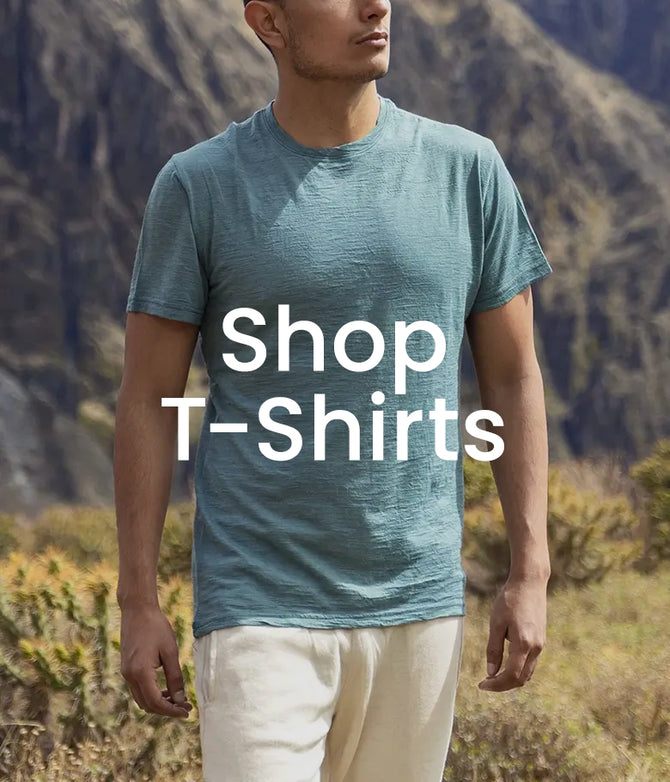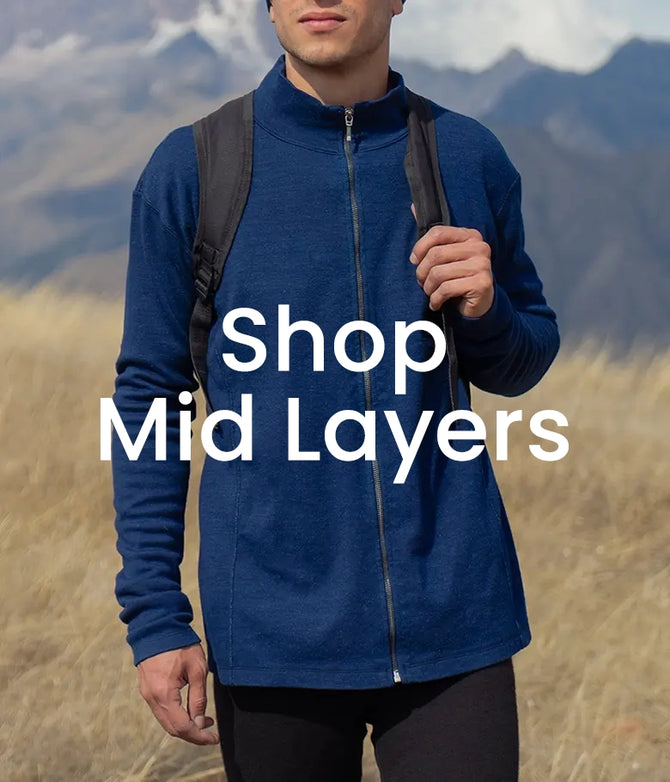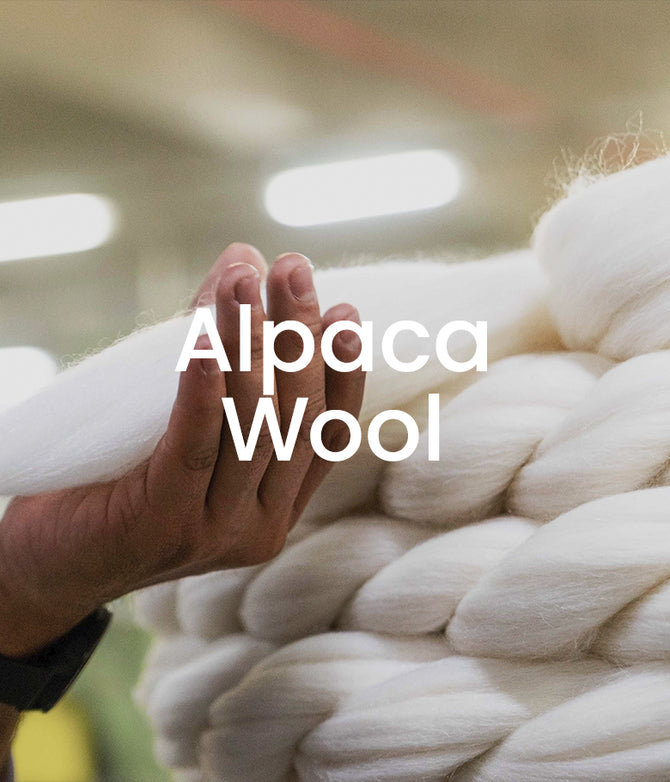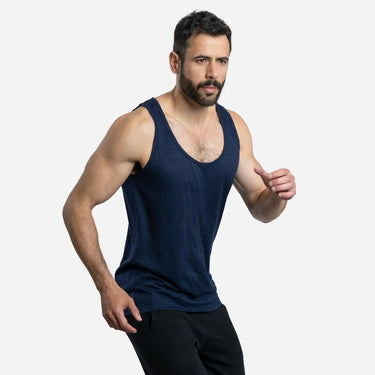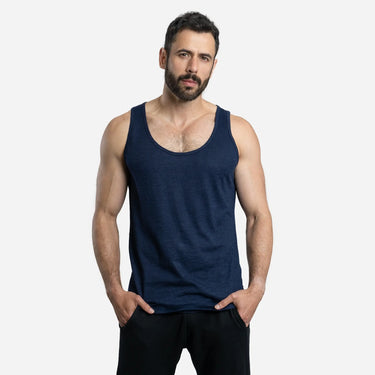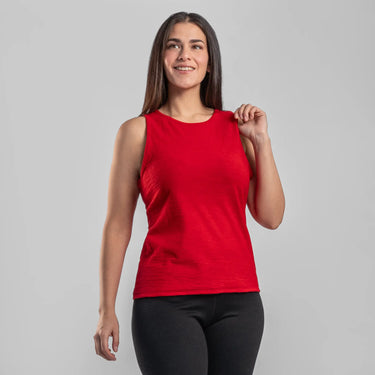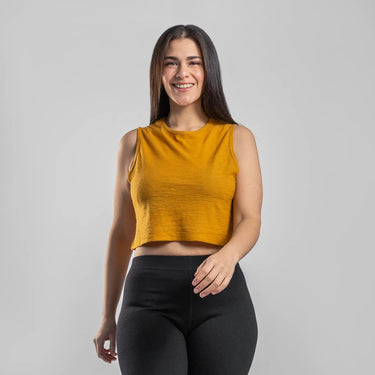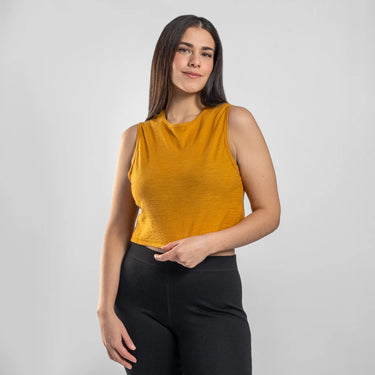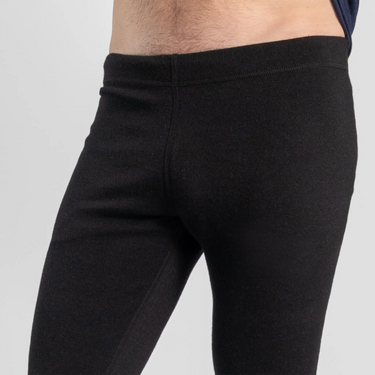Alpaca Wool GSM Guide:
How to Choose the Perfect Weight for Any Adventure
Published May 29, 2025
1. Say Goodbye to Single-Use Plastics
Single-use plastics are a huge environmental problem, but small tweaks in your daily habits can make a big difference:
- Bring reusable bags: Make or buy groceries and produce bags to use instead of plastic ones. Keep them by the door or in your car so you never forget them.
- Ditch bottled water: Invest in a reusable water bottle [1]. If tap water isn’t safe, boil or filter it instead.
- Carry a reusable coffee cup: Even “eco-friendly” disposable cups create waste if not disposed of properly.
- Pack a zero-waste kit: Include bamboo or metal cutlery, a reusable straw, and a container for takeout. It might take practice, but soon it’ll feel natural.
2. Use Less Water and Energy
Every drop counts, and every watt matters. Here are a few small changes to reduce your footprint:
- Shorten your showers: A quick shower saves both water and energy. Bonus: it’s better for your skin too! [2]
- Turn off the lights: Unplug appliances and switch off lights when you’re not using them [3].
- Hang clothes to dry: Whenever possible, skip the dryer and hang your clothes. It’s gentler on fabrics and the planet.
- Flush smarter: If your toilet has an eco-flush option, use it. No eco-flush? Place a filled bottle in the tank to reduce water per flush.
At Arms of Andes we make our gear from 100% Royal Alpaca Wool of 18-18.5 microns.
3. Make Eco-Conscious Food Choices
Food is one of the easiest ways to live more sustainably:
- Buy local and seasonal: This reduces transportation emissions and supports local farmers [4].
- Cook from scratch: Homemade meals usually come with less packaging and waste.
- Be mindful about meat: Choose ethically raised options, like free-range chicken or grass-fed beef, and support sustainable farming practices. Exploring plant-based meals occasionally can also make a difference [5].
- Opt for sustainable groceries: Shop at packaging-free or bulk stores. No access? Buy in bulk at your regular store to minimize waste.
4. Rethink Your Transportation Habits
How you get around affects your carbon footprint. Start small:
- Walk or bike more: Even once a week can make a difference.
- Use public transport: Replace car trips with bus or train rides when possible [9].
- Carpool: Sharing rides with colleagues or friends reduces emissions.
- Fly less: For shorter trips, consider buses or trains. Offset your carbon emissions for long flights.
5. Choose Sustainable Fashion
The fashion industry is one of the largest polluters, but your wardrobe can make a difference:
- Avoid fast fashion: Look for quality over quantity. Cheaper often means corners were cut in ethics and sustainability.
- Buy second hand: Thrift stores and online resale platforms are great for finding unique, affordable items.
- Support eco-conscious brands: Do your research and choose brands that prioritize sustainability, like Arms of Andes, which uses 100% alpaca wool and natural dyes [6].
- Host clothing swaps: A fun way to give new life to unused items in your closet [7].

6. Upgrade Your Hygiene and Cleaning Habits
Small changes to your personal care and cleaning routines can have a big impact:
- Switch to bamboo* toothbrushes: Look for ones with compostable bristles and packaging.
- Choose steel razors: A durable, waste-free alternative to disposable razors.
- Use natural options: Biodegradable shampoos, soaps, and detergents are better for the planet.
- Use menstrual cups and fabric sanitary towels: They take a little getting used to, but you won’t go back when you do!
- Clean with vinegar and baking soda: These simple ingredients work wonders around the house and are free of harmful chemicals [8].
* When choosing products made from bamboo, try to ensure the bamboo comes from sustainable sources.
7. Embrace Nature and DIY Solutions
Spending time outdoors and trying DIY solutions are both fun and sustainable:
- Grow your own vegetables: Even a small herb garden on a windowsill can make a difference.
- Start composting: Turn food scraps into nutrient-rich compost for your garden. No garden? Check if your city collects food waste.
- Connect with nature: Spending time outside reduces stress and reminds us why protecting the planet matters.
- Join community initiatives: Participate in clean-ups or tree-planting events.
8. Be Mindful About Waste
Rethinking how you handle waste is key to sustainable living:
- Reuse before you recycle: Find new uses for things before throwing them away.
- Donate or swap: Let someone else enjoy what you no longer need.
- Avoid expedited shipping: One-day deliveries often mean more vehicles on the road, increasing emissions.
Sustainable living starts with REDUCING waste, REPAIRING and/or REUSING broken/unused items, before RECYCLING or, when possible, COMPOSTING them.
Why Small Steps Matter
You might think, “Will my tiny changes really help?” The answer is yes. If everyone made just one or two of these adjustments, the collective impact would be enormous. And remember, you don’t have to do everything at once. Pick a couple of these tips to start with, and add more as you go. Before you know it, living sustainably will feel like second nature.
So, are you ready to make 2024 your most sustainable year yet? Small steps today can lead to a greener tomorrow. Let’s get started—one habit at a time!

At Arms of Andes we make our gear from 100% Royal Alpaca Wool of 18-18.5 microns.
Reading time: 7 minutes
By Lesia Tello & Jordy Munarriz
At 5,000 meters above sea level, survival is an art. Alpacas have mastered it for centuries. And now, you can too.
Whether you’re hiking sunlit ridgelines or working from home, the clothes you wear shape how you move, feel, and perform. That’s why GSM—grams per square meter—is more than a number. It’s a guide to freedom, warmth, breathability, and versatility. At Arms of Andes, we offer four alpaca wool weights, each built with a specific purpose, season, and lifestyle in mind.
In this guide, we break down what each GSM level means, what it’s perfect for, and how to build the ultimate layering system from the mountains to your morning routine.
110 Featherweight | Breezy, Barely-There, Built for Movement
Our newest weight, 110 GSM, is the lightest alpaca wool shirt you'll find on the planet. Designed for those who thrive in sun, sweat, and simplicity, it feels like wearing nothing—only better.
Currently available in:
Tank tops, T-shirts, long sleeve T-shirts and sun hoodies—perfect for travel, summer, or everyday wear.
Best For:
- Day hikes under the sun.
- Travel in hot climates.
- Everyday wear in spring and summer.
- Ultralight adventures when every gram matters.
Avoid If:
- You’re carrying a heavy pack or doing activities with friction (climbing, scrambling).
- You need thermal insulation in cold or windy environments.
Why You’ll Love It:
Featherweight is all about breathability without sacrifice. It wicks moisture fast, dries quickly, and resists odor naturally—thanks to the antibacterial power of 100% Royal Alpaca wool [1,2,3,4]. If you want a shirt that stays clean, fresh, and cool across days of movement, this is it.
“Featherweight with an airy feeling—because you don’t need heavy to feel ready.”




6. Upgrade Your Hygiene and Cleaning Habits
Small changes to your personal care and cleaning routines can have a big impact:
- Switch to bamboo* toothbrushes: Look for ones with compostable bristles and packaging.
- Choose steel razors: A durable, waste-free alternative to disposable razors.
- Use natural options: Biodegradable shampoos, soaps, and detergents are better for the planet.
- Use menstrual cups and fabric sanitary towels: They take a little getting used to, but you won’t go back when you do!
- Clean with vinegar and baking soda: These simple ingredients work wonders around the house and are free of harmful chemicals [8].
* When choosing products made from bamboo, try to ensure the bamboo comes from sustainable sources.
7. Embrace Nature and DIY Solutions
Spending time outdoors and trying DIY solutions are both fun and sustainable:
- Grow your own vegetables: Even a small herb garden on a windowsill can make a difference.
- Start composting: Turn food scraps into nutrient-rich compost for your garden. No garden? Check if your city collects food waste.
- Connect with nature: Spending time outside reduces stress and reminds us why protecting the planet matters.
- Join community initiatives: Participate in clean-ups or tree-planting events.
At Arms of Andes we make our gear from 100% Royal Alpaca Wool of 18-18.5 microns.
160 Ultralight | The Travel Essential, Base Layer King
This is your ultimate travel companion and base layer go-to. At 160 GSM, Ultralight offers slightly more density than Featherweight, giving you a touch of warmth while keeping everything breathable, sleek, and incredibly soft [2,5].
Made into:
Men's underwear, women's underwear, tank tops, T-shirts, long sleeve shirts, neck gaiters, gloves and beanies—all minimalist travel staples.
Best For:
- Base layer for mountain hikes or cool climates.
- Travel with minimal luggage.
- Everyday wear: office, flights, cafés, casual city use.
- Light hikes with a small backpack.
Avoid If:
- You're mountaineering or doing high-friction activities like bouldering.
- You need insulation as a standalone piece in cold weather.
Why You’ll Love It:
It’s called “The Perfect Travel Shirt” for a reason. It resists odor, folds tiny, dries fast, and keeps you feeling clean even on multi-day trips [2,3,4]. It performs in the Andes, but it looks at home in a dinner party. Seamless fit, zero itch, total style.
“Go farther, pack lighter—and look better doing it.”

300 Lightweight | The Do-It-All Midlayer
When the weather shifts or you gain altitude, the 300 GSM layer becomes your best friend. It’s the bridge between light layers and full insulation, adding warmth without ever making you overheat [5,6].
Crafted into:
Leggings, joggers, hoodies, pullovers, sweaters, gloves, arm sleeve and socks—pieces built for layering or lounging.
Best For:
- Hiking in colder temps.
- Base or mid-layer in alpine conditions.
- Camping, backpacking, cold-weather running.
- Loungewear that still performs.
Avoid If:
- You’re in extreme cold without layering.
- You want something as breathable as a base layer for hot climates.
Why You’ll Love It:
You get warmth without bulk. Breathability without sweat. Style without synthetic layers. This is the most versatile piece for fall, shoulder seasons, and year-round layering. Hoodies, joggers, sweaters—you name it.
“Insulation you’ll actually wear—not just carry.”


420 Midweight | Full Protection for Harsh Conditions
The thickest, warmest option in our lineup. At 420 GSM, this layer is your alpine shield—designed for extreme cold, snow, and wind.
Available in:
Jackets, leggings, sweatpants, beanies, gloves, and socks—your no-compromise cold weather arsenal.
Best For:
- Winter trekking and alpine hikes.
- High mountain climates and freezing nights.
- Snowshoeing, ice camping, ski layering.
- Ultimate warmth without synthetic shells.
Avoid If:
- You’re in a hot or humid climate.
- You want something for active hiking at low altitudes.
Why You’ll Love It:
It’s wind-resistant, warm, and surprisingly breathable [7]. The cut is fitted, the fiber is natural, and the feeling? Like wearing a blanket of confidence. No plastic. No compromise. Just serious protection that feels luxurious.
“This is not your average wool jacket. This is armor made by nature.”

At Arms of Andes we make our gear from 100% Royal Alpaca Wool of 18-18.5 microns.
160 UltralightWomen's Alpaca Wool
Hiking T-Shirt
160 Ultralight
Relaxed FitWomen's Alpaca Wool Leggings 300
Lightweight

For snowboarders, skiers, and winter hikers, weight matters. Every gram counts when you're climbing, carrying gear, or navigating the slopes. Alpaca wool’s unique insulation properties allow for lightweight warmth, meaning you stay protected without unnecessary bulk.
Five Reasons to Choose Alpaca Wool for Snow Sports
Alpaca wool is the ultimate base and mid layer material for tackling the demands of skiing and snowboarding. Its unique properties make it an exceptional choice for base and mid layers, ensuring comfort and performance on the slopes.
1. Exceptional Warmth
Alpaca wool fibers feature semi-hollow cores, providing incredible insulation. Combined with their natural crimp (waviness), these fibers trap heat efficiently,
2. Breathable and Moisture-Wicking
One of alpaca wool’s standout qualities is its ability to wick moisture away from your skin while remaining highly breathable. This means you stay dry and comfortable, even during intense physical activity. Alpaca wool base layers, such as leggings and shirts, excel in keeping you warm and sweat-free.
3. Temperature Regulation
Alpaca wool’s unique ability to balance warmth and breathability helps regulate your body temperature. Whether you're racing downhill or waiting for the ski lift, alpaca wool keeps you warm in the cold and prevents overheating during activity.
4. Lightweight and Flexible
Thanks to its excellent insulating properties, alpaca wool keeps you warm without adding bulk. This lightweight quality ensures freedom of movement—crucial for maintaining balance and agility on the slopes.
At Arms of Andes we make our gear from 100% Royal Alpaca Wool of 18-18.5 microns.
Men's Alpaca Wool Jacket
420 Midweight Full-Zip

Relatedcontent
Bamboo:
A fast-growing plant often used for making sustainable products like toothbrushes and cutlery.
Biodegradable:
Materials that can break down naturally without harming the environment.
Bulk stores:
Shops where you can buy products in large quantities, often with minimal packaging.
Carbon footprint:
The total amount of greenhouse gases produced directly or indirectly by human activities.
Composting:
A process where organic waste decomposes into nutrient-rich material for gardening.
Ethically raised:
Livestock or poultry that is raised in humane and environmentally responsible ways.
Fast fashion:
Cheap, mass-produced clothing often linked to environmental and ethical issues.
Natural dyes:
Coloring substances derived from plants, animals, or minerals, used to color fabrics sustainably.
How to Build Your Layering System with Alpaca Wool
In the outdoors, the right layering system is everything. It’s not about bulk—it’s about strategy. Whether you’re hiking under the sun, camping in the Andes, or braving chilly mornings in town, alpaca wool adapts to your journey.
Here’s how each GSM weight fits into your adventure kit:
Base Layer
Worn next to your skin, this layer manages moisture, keeps you dry, and regulates body temperature.
- 110 Featherweight: For hot climates, sunny day hikes, and travel minimalism. Ultra-breathable, ultra-light. Best for light activity with little abrasion.
- 160 Ultralight: Ideal for active travel, everyday wear, and low-friction hikes. Anti-odor and quick-drying, this is the "wear it for days" layer.
- 300 Lightweight: Heavier shirts, hoodies, and pullovers in this weight can double as a warm base when the temperatures drop.
Mid Layer
Designed to retain heat while allowing your body to breathe. Ideal for layering over a base or under a shell.
- 300 Lightweight: Perfect for layering during cooler treks, alpine mornings, or evenings by the fire. Hoodies, sweaters & pullovers add warmth without bulk.
- 420 Midweight: A high-performance insulating layer for extreme cold. Found in jackets, this wool weight locks in heat and shields against wind.
No plastics. No toxins. Just alpaca. The ultimate outdoor fiber.
*Looking for an “outer layer”?
Alpaca wool is your best ally for base and mid layers—but when nature throws snow, heavy rain, or icy winds your way, you’ll need a weatherproof outer shell. These are typically made with synthetics like polyester or nylon. At Arms of Andes, we encourage you to minimize plastics elsewhere by choosing natural, breathable wool layers for everything underneath.


Still Unsure? Start Here:
| Activity | Recommended GSM |
|---|---|
| Long hike in cold weather | 160 + 300 |
| Ultralight summer travel | 110 or 160 |
| Everyday T-shirt | 110 or 160 |
| Cold weather camping | 160 + 420 |
| Climbing or abrasion-heavy activity | 300 |
| Sitting at a mountaintop café | 110 or 160 |
| Snowy day hike | 110 or 160 + 420 |
| Snowboarding or skiing (mid layer) | 300 or 420 |
| Cold morning yoga outdoors | 110 + 300 |
| Fresh & sunny morning yoga outdoors | 110 or 160 |
| Early-morning trail running in Andes | 160 or 300 |
| Watching stars at high altitude |
Why Choose Alpaca Wool? Nature’s Most Intelligent Fiber
Alpaca wool isn’t just soft—it’s science-backed performance built by evolution. Here’s why it outperforms other materials in any climate:
Exceptional Warmth
Alpaca fibers are semi-hollow, trapping heat without weight. Their natural crimp adds loft, making them ideal for insulating layers in cold environments [1,2,5,7,9].
Breathable & Moisture-Wicking
Unlike synthetic fibers, alpaca lets your skin breathe while keeping sweat away. That’s why our base layers stay dry—even on uphill climbs [1,2,3,4].
Temperature Regulation
In the Andes, days are hot and nights are cold. Alpacas evolved to handle both—and so does their wool. It keeps you warm without overheating [1].
Lightweight & Flexible
You get all the warmth of bulkier materials, but with freedom to move. Whether you’re layering under a shell or stretching at sunrise, it adapts to you [5,8].
Hypoallergenic
Alpaca wool contains no lanolin (a waxy substance found in sheep’s wool), making it naturally hypoallergenic and safe for sensitive skin. That means no itch, no irritation, even with all-day wear [9,10,11,12,13,14].
Antibacterial & Odor-Resistant
Fewer washes, less stink. Perfect for multi-day treks and minimalist wardrobes [2,3,4].


Glossarykeywords
Base layer:
The clothing worn closest to the skin, designed to wick moisture, regulate temperature, and keep the body dry during activity.
Breathability:
The fabric's ability to allow air and moisture vapor to pass through, preventing overheating and sweat buildup.
GSM (Grams per Square Meter):
A measurement of fabric weight and density; higher GSM means thicker, warmer, and more insulating material.
Hypoallergenic:
Refers to materials that are unlikely to cause allergic reactions, such as alpaca wool, which is gentle on sensitive skin.
Insulation:
The ability of a material to retain body heat and provide warmth in cold conditions.
Layering:
A system of wearing multiple clothing layers—base, mid, and (optionally) outer—to adapt to changing environmental conditions.
Mid layer:
The insulating layer worn over a base layer; designed to trap body heat while allowing moisture to escape.
Minimalism:
A travel and lifestyle approach that prioritizes fewer, higher-quality, multi-use garments that pack light and perform well.
Moisture wicking:
The fabric’s ability to pull sweat away from the skin to keep the wearer dry and comfortable.
Odor-resistant:
The natural antibacterial property of alpaca wool that reduces the buildup of smell-causing microbes.
Versatility:
The ability of alpaca wool layers to be worn in a wide range of conditions and activities, from mountain hikes to café lounging.
Wind-resistant:
The ability of heavier alpaca fabrics (like 420 GSM) to block wind and protect in harsh weather.
At Arms of Andes we use the finest Royal Alpaca Wool sourced in the Peruvian Andes. The Andean alpacas naturally developed over thousands of years in harsh conditions in high altitudes, creating the perfect fiber for outdoor gear that helps you stay protected in all conditions. Discover our outdoor apparel.

In the textile industry, companies that produce garments made entirely from Merino wool typically use fibers that are 17.5 microns or finer to minimize any itchiness or roughness, [4] ensuring comfort for their customers. A study conducted by the Division of Dermatology at the University of Louisville in 2019 evaluated the effects of wearing these garments on individuals with skin sensitivities, such as atopic dermatitis or eczema. In the study, 25 participants wore only Merino wool garments of 17.5 microns for six weeks and cotton garments of 21 microns for six weeks more, while another group of 25 followed the reverse order. Participants reported significant changes when switching from cotton to Merino wool, with those who started in Merino wool experiencing a decrease in their eczema during the first weeks. [4]
| Properties | Royal Alpaca Wool | Cashmere | Merino Wool |
|---|---|---|---|
| Weight | Lightest | Light | Heavier |
| Fiber Structure | Semi-Hollow | Solid | Solid |
| Thermal Capacity | 5 x Warmer | 3 x Warmer | Warm |
| Water Retention | Absorbs 10% of weight | Shrinks in water | Absorbs 10%
of weight |
| UV Protection | Yes | Yes | Yes |
| Fiber Scales | Smoothest | Softest | Prickly |
| Microns (average) | 17.5 | 14 | 18 |
| Tensile Strength | Highest | Weak | High |
| Odor Resistance | Yes | Yes | Yes |
| Wrinkle Resistance | Yes | Yes | Yes |
| Hypoallergenic (Lanolin free) | Yes | Yes | No |
The Final Verdict: And the Winner Is...
After a comprehensive analysis of alpaca, merino, and cashmere, it's clear that cashmere, while undeniably luxurious, lacks the durability required for outdoor garments. However, it excels as a high-end fiber for special occasions and elegant attire.
In the head-to-head battle between alpaca and merino, alpaca emerges as the undisputed champion! Alpaca wool surpasses merino in warmth, lightness, softness, and strength. It's the ultimate choice for those seeking performance, comfort, and sustainability.
Authors & Researchers

Lesia tello
Biologist and hiking enthusiast with a deep admiration for nature and the intricate mechanisms of life. With a background in biochemistry and a master’s degree in education, she blends science with adventure, exploring how we interact with the natural world and sharing insights on outdoor experiences.

Jordy Munarriz
Environmental Engineer with a master’s degree in renewable energy and a specialization in sustainability. A passionate traveler and advocate for responsible tourism, he captures the essence of exploration through storytelling, inspiring others to connect with nature in a conscious and meaningful way.
Authors & Researchers

Lesia tello
Biologist and hiking enthusiast with a deep admiration for nature and the intricate mechanisms of life. With a background in biochemistry and a master’s degree in education, she blends science with adventure, exploring how we interact with the natural world and sharing insights on outdoor experiences.

Jordy Munarriz
Environmental Engineer with a master’s degree in renewable energy and a specialization in sustainability. A passionate traveler and advocate for responsible tourism, he captures the essence of exploration through storytelling, inspiring others to connect with nature in a conscious and meaningful way.
Alpaca wool (particularly the royal and baby alpaca fiber grades) is non-itchy, warm, and performs better than merino and other types of sheep's wool. This makes alpaca wool perfect for your outdoor clothing, slipper socks, and even underwear.

Glossarykeywords
Base layer:
The clothing worn closest to the skin, designed to wick moisture, regulate temperature, and keep the body dry during activity.
Breathability:
The fabric's ability to allow air and moisture vapor to pass through, preventing overheating and sweat buildup.
GSM (Grams per Square Meter):
A measurement of fabric weight and density; higher GSM means thicker, warmer, and more insulating material.
Hypoallergenic:
Refers to materials that are unlikely to cause allergic reactions, such as alpaca wool, which is gentle on sensitive skin.
Insulation:
The ability of a material to retain body heat and provide warmth in cold conditions.
Layering:
A system of wearing multiple clothing layers—base, mid, and (optionally) outer—to adapt to changing environmental conditions.
Mid layer:
The insulating layer worn over a base layer; designed to trap body heat while allowing moisture to escape.
Minimalism:
A travel and lifestyle approach that prioritizes fewer, higher-quality, multi-use garments that pack light and perform well.
Moisture wicking:
The fabric’s ability to pull sweat away from the skin to keep the wearer dry and comfortable.
Odor-resistant:
The natural antibacterial property of alpaca wool that reduces the buildup of smell-causing microbes.
Versatility:
The ability of alpaca wool layers to be worn in a wide range of conditions and activities, from mountain hikes to café lounging.
Wind-resistant:
The ability of heavier alpaca fabrics (like 420 GSM) to block wind and protect in harsh weather.
References:
[1] Li, Y., Holcombe, B. V., & Apcar, F. (1992). Moisture buffering behavior of hygroscopic fabric during wear. Textile research journal, 62(11), 619-627. https://doi.org/10.1177/004051759206201101
[2] Matthew P. Morrissey & René M. Rossi (2013) Clothing systems for outdoor activities, Textile Progress, 45:2-3, 145-181, https://doi.org/10.1080/00405167.2013.845540
[3] Choudhury, A. K. R. (2023). Sustainable protein fibres. In Sustainable Fibres for Fashion and Textile Manufacturing (pp. 181-226). Woodhead Publishing. https://doi.org/10.1016/B978-0-12-824052-6.00010-X
[4] Acevedo Villazana, L., Mora Altez, C. S., & Camargo Hinostroza, S. (2022, April). Analysis of the vicugna pacos (Alpaca) wool fiber in the properties of concrete. In International Conference on Advances in Environment Research (pp. 129-139). Cham: Springer International Publishing. https://doi.org/10.1007/978-3-031-26365-1_11
[5] Bartl, K., Mogrovejo, P., Dueñas, A., & Quispe, I. (2023). Cradle-to-grave environmental analysis of an alpaca fiber sweater produced in Peru. Science of The Total Environment, 905, 167023. https://doi.org/10.1016/j.scitotenv.2023.167023
[6] Moore, K. E. (2015). The impact of fleece characteristics on insulation and heat exchange, and the consequential effect on vitamin D of alpacas in southern Australia. https://research-repository.uwa.edu.au/en/publications/the-impact-of-fleece-characteristics-on-insulation-and-heat-excha
[7] Czaplicki, Z., Mikołajczyk, Z., & Prążyńska, A. (2018). Analysis of functional properties of knitted fabrics made of alpaca wool and other fibres. Fibres & Textiles in Eastern Europe, 26(3 (129)). 10.5604/01.3001.0011.7302
[8] Doyle, E. K., Preston, J. W., McGregor, B. A., & Hynd, P. I. (2021). The science behind the wool industry. The importance and value of wool production from sheep. Animal Frontiers, 11(2), 15-23. https://doi.org/10.1093/af/vfab005
[9] Allain D, Renieri C. Genetics of fiber production and fleece characteristics in small ruminants, Angora rabbit and South American camelids. Animal. 2010;4(9):1472–1481. DOI: 10.1017/S1751731110000029
[10] Radzik-Rant A. , Pofelska O. , Rant W. Characteristics of alpaca wool from farmed animals located on different continents. Annals of Warsaw University of Life Sciences - SGGW. Animal Science. 2018;57(2):151-158. DOI: 10.22630/AAS.2018.57.2.15
[11] Radzik-Rant A, Wiercińska K. Analysis of the wool thickness and medullation characteristics based on sex and color in a herd of alpacas in Poland. Arch Anim Breed. 2021;64(1):157–165. DOI: 10.5194/aab-64-157-2021
[12] Moulton, L. (2024). The Emergence of the Peruvian Alpaca Industry in American Markets. https://www.fcs.uga.edu/docs/The_emergence_of_the_Peruvian_alpaca_industry_in_American_markets.pdf
[13] Karthik, T., Rathinamoorthy, R., & Ganesan, P. (2015). Sustainable luxury natural fibers—production, properties, and prospects. Handbook of Sustainable Luxury Textiles and Fashion: Volume 1, 59-98. https://link.springer.com/chapter/10.1007/978-981-287-633-1_4
[14] PubChem. Lanolin [Internet]. Bethesda (MD): National Library of Medicine (US). Available from: https://pubchem.ncbi.nlm.nih.gov/compound/Lanolin


